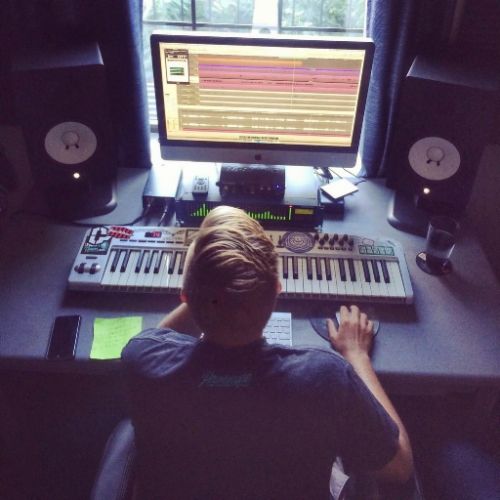

As the weeks go by in our Masterclass series, Hyperbits continues to hold our hand as we delve further and further down the rabbit hole of music production. We have covered ideas such as creativity, sound design, mixing, and as we move into week five, we start putting all these pieces together to make our tracks come alive while still sounding massive and in your face.
To achieve a sound that is commercially viable, it can take a lot of very minor tweaks and decisions. The best way to achieve this is by layering sounds together. This method can apply to anything from percussions (layering two separate kick drums together) to layering synths together to achieve a warm, fat bass line. But there is more to this practice than simply chucking a few patches of Serum into Ableton and calling it badass. The subtle art of layering is what separates the amateurs from the professionals, and after this week was complete, the whole class was more than on their way to achieving this.
Hyperbits stressed the fact that contrast is key in this. Stacking two similar sounds to achieve what you’re looking for will more likely just end up with a muddy and washy-sounding instrument, creating phase cancelation. The truly groundbreaking concept that was introduced in this week was four characteristics that you should be aiming for in every layer. While you may not need every layer characteristic for every instrument, having at least two of the four will put you in good standing and get you to where you want to be.
1 – Weight: This layer of the instrument will be the low lows. This is that sub-bass boom or that wicked thump that will hit you in the chest.
2 – Body: Any layer that is in this range will likely comprise the tonality of the instrument. The mid-range frequencies are where you will find the warmth of the sound you are aiming for, so the main sound and tone of your instrument will likely fall in this range.
3 – Crispness: These upper-mid frequencies are a great way for the attack and initial transients to live. This layer will provide the presence and coloration for your instrument, and can often give the sound and overall edge shine that make it sound up against other commercial records.
4 – Polish: This upper frequency layer will provide that glossy shine to the instrument. Overall it can add a bit of air and breath to the instrument as well. But these high frequencies can easily become fatiguing to a listener, so use these ranges sparingly or else too many of your instruments will build up here and become tiresome.
Once we got a chance to put these concepts to use, they quickly become game-changing practices. All our leads thickened up, our basses became fatter, and our mixes became warmer and more lively. As we move into next weeks concepts, we are geared up and have all the necessary tools to start pumping our commercial master tracks that will set the dance floors on fire.
Until next week, happy producing! Head over to Hyperbits’ website for more information on upcoming masterclasses and webinars hosted by our phenomenal teacher.





